Badminton’s most prestigious tournament, the All England, remains undeterred while other international events leading up to it are cancelled or postponed as the Covid-19 virus disrupts lives and supply chains around the globe. Our preview specialist, Aaron Wong, shares his perspective on the big picture.
By Aaron Wong. Photos: Badmintonphoto
No small matter
This moment before the tournament is pure and perfect – before viewers, athletes and officials become carried away by the drama, logistics, politics, commercialism and partisanship. It is in much the same way that 5PM on Friday is considered the best part of the weekend because a good mood prevails about what’s ahead, whereas afterwards, as usual, yields Mondayitis or, at best, bittersweetness that the fun is done.
The World Health Organization describes the outbreak of Covid-19 as a global emergency and a threat worse than terrorism. It’s a reminder that really bad things do happen. Its genesis was born out of self-interest of a small percentage of selfish people who legislated the breeding and eating of wild animals. Basically, people in power made stupid and self-centred decisions and look what happens – the whole world suffers. It’s a new low point of humanity.
The All England going ahead lights the torch of optimism during such dark times. It very nearly could have been cancelled for the first time this century. To further put things into perspective, the tournament was only missed previously during the periods of World Wars I and II.
Will the All England results predict the Olympic ones?
Perhaps, but not necessarily. This year might be different. Given recent form, every returning defending champion has a better than average chance to top the podium again.
However, it is rare in an Olympic year to have won the past two All Englands and by extension that would be a sign of dominance with a momentum. In 1996, this feat for Poul-Erik Hoyer Larsen and Ricky Subagja / Rexy Mainaky translated into gold at Atlanta. In 2004, Gao Ling / Huang Sui’s four successive All England’s saw them into the Athens gold medal match but they left with silver. However, the last time the pattern occurred, Gao Ling / Zheng Bo failed to clear the first round in Beijing.
1996 all over again?
Never have the reigning All England champions titled across the board in the Olympics of the same year. 1996 was the most in tune, with names in four disciplines but mixed doubles still remained the odd one out. Nevertheless, it was the same national flag raised above each corresponding podium in Atlanta, that first time when all five disciplines yielded medals at the Olympics, and from the point of view of certain countries’ ideology, that is just as desirable an outcome.
Remember, those were the days when the leading pack was smaller too.
London 2012 saw three of the same set of personnel between the two loftiest titles but women’s doubles drew controversy. Subtracting that exception, the All England has only reliably predicted at most two champions every four years and, more frequently, one or zero. At Rio, the All England was right once but you wouldn’t have put money on it as both sides were merely separated by two points in the decider despite a shaky short serve by the eventual victors.
Currently, the ability to win or fell giants in competitions where all of the top 10 are in attendance lies in the hands or a larger proportion of athletes as well as being spread across more nations than at any time since badminton joined Olympic competition seven editions ago.
In my opinion, the order starts with roughly 14 contenders in each of men’s singles and men’s doubles, followed by 12 in women’s doubles, 10 in women’s singles until least of all mixed doubles, which contains 8 pairs with the right chops to accomplish the job or deny the next best opponent.
Not forgetting, the speed of the game and athletes is the fastest and most stressful it’s ever been. So, it will be a wonder should 1996’s feat repeat itself though not implausible.
All in all, the All England is also the more natural big event because it is badminton specific and a straightforward knockout format. Whereas the Olympics are a mega multi-sport production entailing more distractions and protocol, and fewer difficult rounds for the favourites. In addition, the calculation required to determine who emerges second in each group of the preliminary stage and them being redrawn for the knockout stage means you cannot project forward whom you’ll be playing. Clearly, we’re not comparing oranges with oranges.
Lucky Brummies
On the bright side, this All England is a boon for players who are genuine or outside contenders that are unlikely to make the quota cut based on the Olympic qualification policy, or are independent professionals not endorsed by their national associations.
For example, the heartbreaking reality is, one of Indonesia’s three world top five men’s doubles pairs has to stay home come July. In women’s doubles, the same fate potentially awaits Olympic gold medallists Ayaka Takahashi / Misaki Matsutomo (pictured) and two Korean pairs who can beat their compatriots but have to wish them good luck.
The Tokyo 2020 crowd will miss Lin Dan on court but lucky Brummies won’t.
The differentiator
The differentiator between the top players is boiling down to two things: their levels of concentration and troubleshooting problems. The former is more frequently within one’s control within a match and broadly applicable.
As for the latter, one can’t beat everybody but can learn to beat the ones in your path although Kento Momota (pictured right, with Viktor Axelsen) comes closest as of January given he only lost three of his recent 15 tournaments.
Concentration encompasses the patience to rally, clarity of vision of the court and opponent’s movement, not losing one’s nerve at deuce, and trusting one’s split second judgment.
It’s the ability to bounce back from difficult line calls or being cheated of a point; to stay unaffected in doubles while your partner is out of rhythm; to maintain focus through stating your case with an umpire or referee; to not despair about the drift in the hall; to stay close to an opponent on a hot streak; and it’s the confidence to come back from well behind. Because all the above situations are inevitable, and they don’t just happen to somebody else.
The baseline prerequisites of a full palette of superior technical skills and court speed are a given. In the fastest racquet sport of all, the speed of quality thoughts is what’s making the difference. It means the athlete doesn’t have to depend entirely on having a good day to come out ahead.
Men’s singles: In the absence of the titan
Men’s singles is without its defending champion, Kento Momota, while he resolves some vision impairment caused by a motor accident en route home from the Malaysia Masters.
The door is ajar for a gently resurgent Chen Long (pictured) to score a third All England, seven years after his first. To do so requires him to repeat besting players he met in 2019, notably former world #1s Srikanth Kidambi, Lin Dan and Viktor Axelsen. Chen’s hardly past it at 31 years old. Lee Chong Wei laid claim two more championships at ages 34 and 31 while Lin Dan won for a sixth time in Birmingham aged 32.
Top seed Chou Tien Chen hasn’t a favourable draw with Ng Ka Long and Anthony Ginting, both of whom he finds tricky, in sight. Neither does 5th seed Anders Antonsen with Ginting, whom he is yet to beat in three attempts, inside his quarter. Spare a thought too for 6th seed Asian Games champion Jonathan Christie who hasn’t overcome Chen Long in eight attempts.
The draw is as good as it’s going to get for Ng Ka Long and Chen Long so a Hong Kong and China battle is one scenario looming. Well, this time it’s not political.
Early men’s singles matches of note:
Chen Long (CHN) [3] vs. Kidambi Srikanth (IND)
Jonatan Christie (INA) [6] vs. Lee Zii Jia (MAS)
Ng Ka Long (HKG) [8] vs. Kenta Nishimoto (JPN)
Lee Cheuk Yiu (HKG) vs. Lakshya Sen (IND)
Lin Dan (CHN) vs. Kunvalut Vitidsarn (THA)
Women’s singles: Crisis of confidence
Of the three others who climbed to world #1 in 2019 and the latest World Champion Pusarla Venkata Sindhu, Chen Yufei (pictured right, with Tai Tzu Ying) would appear to have the ideal physique for badminton. She’s not too tall nor short, and height can hamper the other four women during their defense modes. It’s crucial when badminton comes down to as little as the last two points.
In 2019, Chen finally hit her stride. Confidence, technical abilities, precision, stamina, strength, and wiles have all come together. It’s such fortunate timing with this being an Olympic year, so much so it’s reminiscent of her predecessor Li Xuerui whose quiet and immovable self-assurance, that escalated phenomenally in the space of a year and a bit, helped push aside everybody in the way of London Olympic glory.
Chen faces a finals-worthy opponent in the opener in the form of French Open winner and world #9 teenage sensation An Se Young. An is the most exciting thing to have happened in badminton in the second half of 2019, having dealt defeats to half of the top 10. She’s demonstrably a fast learner and this is the perspective to take on this match.
Currently, confidence is flowing naturally for Chen. On the other hand, it’s been sputtering for those other three world #1s from 2019 – Tai Tzu Ying, Nozomi Okuhara and Akane Yamaguchi – especially but not exclusively against Chen.
Seeing as concentration is fleeting of late for Tai and Akane Yamaguchi – while Carolina Marin (pictured left) is chronically prone too because a fiery, impatient, accelerating the pace style is a double-edged sword – the bottom half of the draw presents an equal opportunity to any of the seeds, including He Bingjiao.
A Marin-Yamaguchi quarter-final stands out as the most entertaining since the Sindhu-Okuhara rivalry has lost its lustre from wrapping up in straight games either way the last six times. Also, it’s not out of the question that the North American underdogs can step up to prevent Sindhu and Okuhara meeting.
Early women’s singles matches of note:
Chen Yufei (CHN) [1] vs. An Se Young (KOR)
Nozomi Okuhara (JPN) [4] vs. Michelle Li (CAN)
Pusarla Venkata Sindhu (IND) [6] vs. Zhang Beiwen (USA)
Busanan Ongbamrungphan (THA) vs. Mia Blichfeldt (DEN)
Kim Ga Eun (KOR) vs. Aya Ohori (JPN)
Men’s doubles: Friendly fire
Do the world #1s have something new to offer? I’m leaning towards no. Marcus Fernaldi Gideon / Kevin Sanjaya Sukamuljo’s stupendous quality through outrageous shot selections is apparent but they ought to be wary of pairs they’ve encountered several times or mid-tempo opponents competent at neutralising pace. In this draw, that could be Shin Baek Cheol / Ko Sung Hyun in Round 2 and 8th seeds Aaron Chia / Soh Wooi Yik at the quarters.
Gideon is vulnerable to bouts of self-consciousness, which is the enemy of concentration and patience. In losses where this has transpired, Sukamuljo hasn’t been able to encourage his partner out of it and/or Gideon hasn’t let him.
By contrast, the defending champions Mohammad Ahsan / Hendra Setiawan (pictured above) are superior to the rest at staying focused throughout a match and benefit from a good draw. Being world #2 since August enables them to capitalise even more in a tournament once Gideon/Sukamuljo are slain by avoiding them until a final. Ahsan/Setiawan’s toughest semi-final possibility would be the other Indonesians Fajar Alfian / Muhammad Rian Ardianto, seeded 5th. Similarly, the runners-up Chia/Soh face danger in the form of teammates too.
Malaysia Masters winners Kim Gi Jung / Lee Yong Dae find themselves in the same half but different quarter as the world #1s. In their favour, the Koreans have accumulated a year’s experience together and tick off the two criteria that would annoy the Indonesians.
Early men’s doubles matches of note:
Fajar Alfian / Muhammad Rian Ardianto (INA) [5] vs. Mathias Boe / Mads Conrad-Petersen (DEN)
Lee Yang / Wang Chi Lin (TPE) [7] vs. Mark Lamfuss / Marvin Seidel (GER)
Aaron Chia / Soh Wooi Yik (MAS) [8] vs. Goh Sze Fei / Nur Izzuddin (MAS)
Choi Sol Gyu / Seo Seung Jae (KOR) vs. Takuro Hoki / Yugo Kobayashi (JPN)
Huang Kaixiang / Liu Cheng (CHN) vs. Kim Gi Jung / Lee Yong Dae (KOR)
Women’s doubles: Who’s found their optimum?
Chen Qingchen and Jia Yifan (pictured right) have been reinstalled as world #1 since November. They’ve worked at resolving certain major issues and are willing to slog it out on court. It’s not entirely smooth flowing but banished is their hit and miss confidence. Whether coincidental or not, their results and consistency began turning around with a change of courtside coach.
The quarter-finals looks set to reignite what was one of the tensest rivalries in this discipline, between Chen/Jia and Olympic gold medallists Misaki Matsutomo / Ayaka Takahashi.
The four Japanese pairs in the top 11 have mellowed and endeavouring to steal centre stage has been the rise of Korea’s second, third and fourth female combinations. Buoyed by touching the top 10 and 13th spots in less than a year, Chang Ye Na / Kim Hye Rin and Jung Kyung Eun / Baek Ha Na look like they have more to prove.
The World Champions Mayu Matsumoto / Wakana Nagahara can breathe a sigh of relief that there aren’t Koreans in sight until the semi-final stage.
Greysia Polii / Apriyani Rahayu represent the fourth nation in the top 10 mix as China, Japan, and Korea have supplied three pairs each. The 8th seeded Indonesians have exceeded themselves so early in this year by surviving many a grueling match and having two World Tours to show for it – although they only needed to beat one top 10 pair towards those two titles. The break in the World Tour would have rejuvenated them but their insufficient penetrative smash, unlike Jia or Matsumoto or Shin Seung Chan, amounts to scarce easy points, which is hardly a good sign were they to encounter some Japanese. Being able to maintain their quality through five rounds of deciding games will also be tough but they’re playing at the optimum.
Early women’s doubles matches of note:
Chen Qingchen / Jia Yifan (CHN) [1] vs. Gabriela Stoeva / Stefani Stoeva (BUL)
Greysia Polii / Apriyani Rahayu (INA) [8]) vs. Chang Ye Na / Kim Hye Rin (KOR)
Li Wenmei / Zheng Yu (CHN) vs. Chow Mei Kuan / Lee Meng Yean (MAS)
Mixed doubles: Follow the script
Of all the disciplines, mixed doubles tends to follow the script of the majority of seeds going through unscathed into the quarters. There lies the usual, highly anticipated China-Thailand semi-final.
The 3rd quarter of this draw allows room for script changes if the quality of the Higashino/Watanabe and Eom/Ko match is as excellent as their 2019 Australian Open encounter, where there was continual problem-solving demanded of both sides. The last few moments points decided the outcome and Yuta Watanabe was forced to produce some magic.
A Canadian-Indonesian Round 2 between Josephine Wu / Joshua Hurlbert-Yu and 5th seeds Melati Daeva Oktavianti / Praveen Jordan is one to hope for. Such a test will benefit the Canadians’ development and there is a possibility of converting it if they can stay simultaneously focused and avoid over-cooking shots.
Early mixed doubles matches of note:
Arisa Higashino / Yuta Watanabe (JPN) [4] vs. Eom Hye Won / Ko Sung Hyun (KOR)
Chae Yu Jung / Seo Seung Jae (KOR) [6] vs. Lai Shevon Jemie / Goh Soon Huat (MAS)
Goh Liu Ying / Chan Peng Soon (MAS) [7] vs. Pitha Haningtyas Mentari / Rinov Rivaldy (INA)
Gloria Emanuelle Widjaja / Hafiz Faizal (INA) [8] vs. Gabrielle Adcock / Chris Adcock (ENG)
Lai Pei Jing / Tan Kian Meng (MAS) vs. Josephine Wu / Joshua Hurlbert-Yu (CAN)
Actually
Having an extra break on the World Tour is another rarity and an odd upside of Covid-19 causing cancellations. Eight to nine weeks have passed since the last big tournaments, which were the Super 500s in Malaysia and Indonesia. It can only have been a useful development opportunity for many top players to iron out the kinks in their past performances which adherence to the BWF participation requirements seldom permitted.
In light of bringing out the best in humanity, a good thing to hope for, above cheering for your favourite, is wishing for another breakthrough performance as charismatic as Higashino/Watanabe’s in mixed in 2018 or Chia/Soh in men’s in 2019.
Every athlete has their own potential, and many have not yet reached it or regained it, including several in the top 10s. Doing that, or one’s utmost, makes badminton greater.
It took Covid-19 to reminds us to take stock of what’s truly important and furthermore that self-serving slippery slope rationalised decisions do lead to terrible and unimaginable ramifications. For instance, money and commercialism, problematically and paradoxically, makes things happen but it needn’t be the prime driver, should it? All we really want is the freedom to carry on leading normal lives and the All England actually going ahead is a small positive step towards resuming that.
Click here to view the complete draws
![ALL ENGLAND Preview – Love badminton in the time of Covid-19 Badminton’s most prestigious tournament, the All England, remains undeterred while other international events leading up to it are cancelled or postponed as the Covid-19 virus disrupts lives and supply chains […]](http://www.badzine.net/wp-content/uploads/ngg_featured/20160313_1354_AllEngland2016_BPRS2118_rotator.jpg)
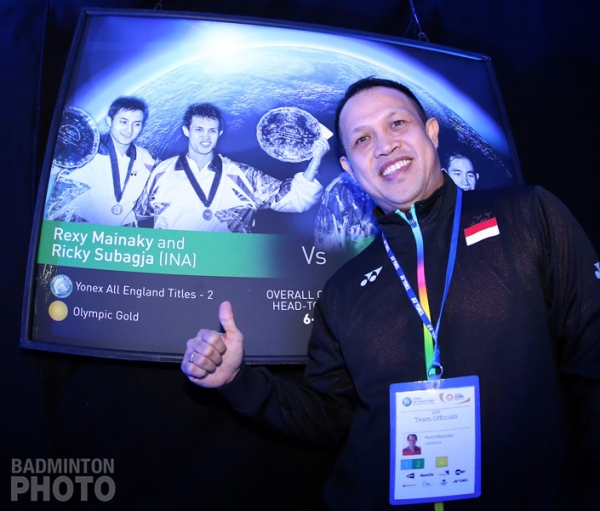
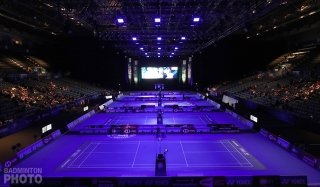
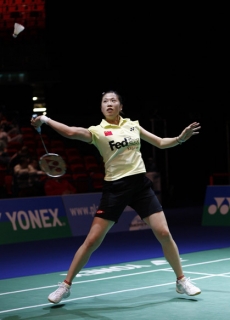
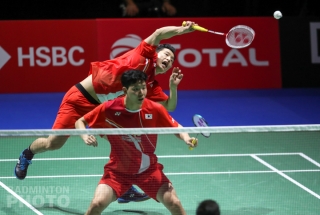
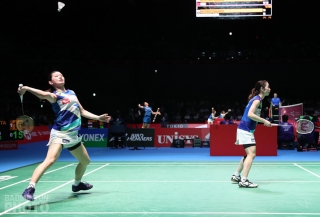
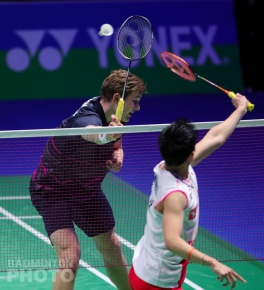
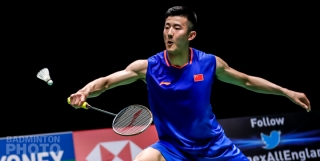
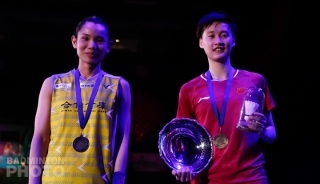
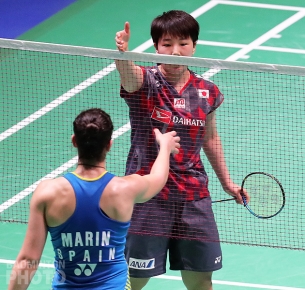
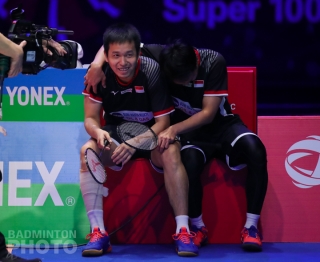
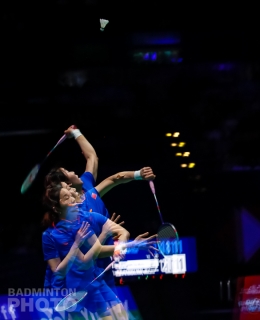
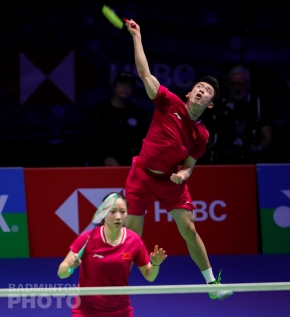
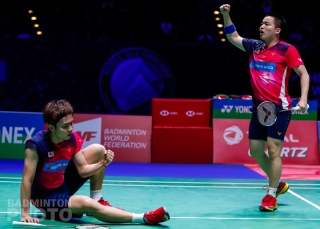

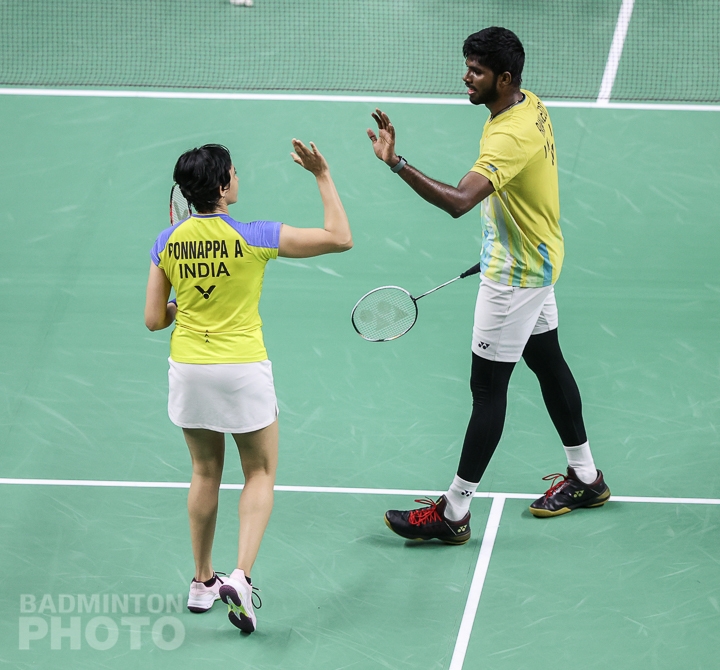
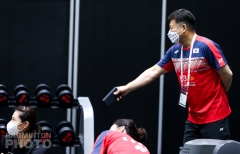
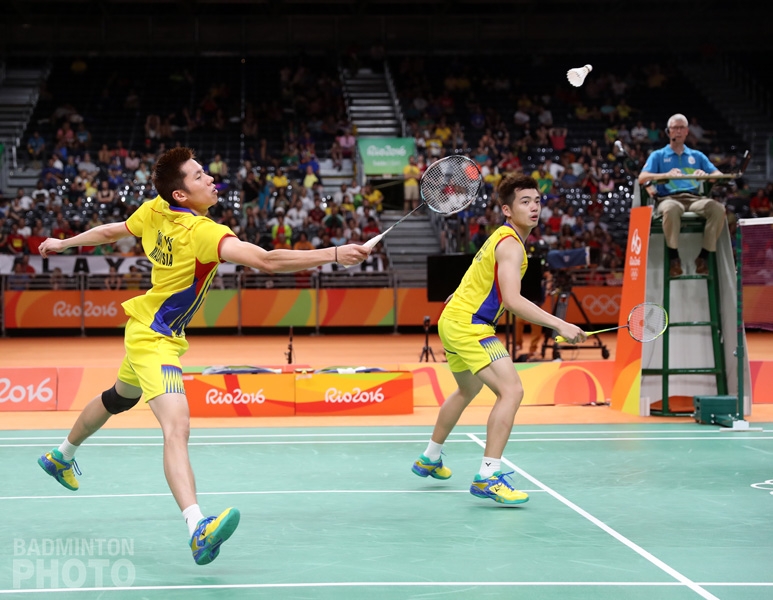

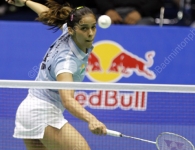
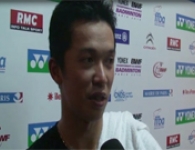
“The Tokyo 2020 crowd will miss Lin Dan on court but lucky Brummies won’t.”
Sorry, but too early to say my friend. Don’t go about making assumptions.